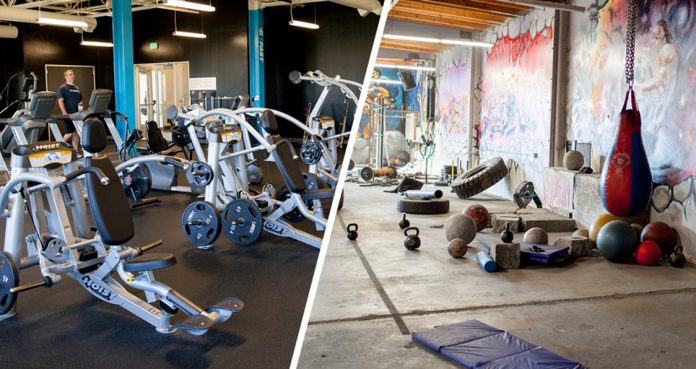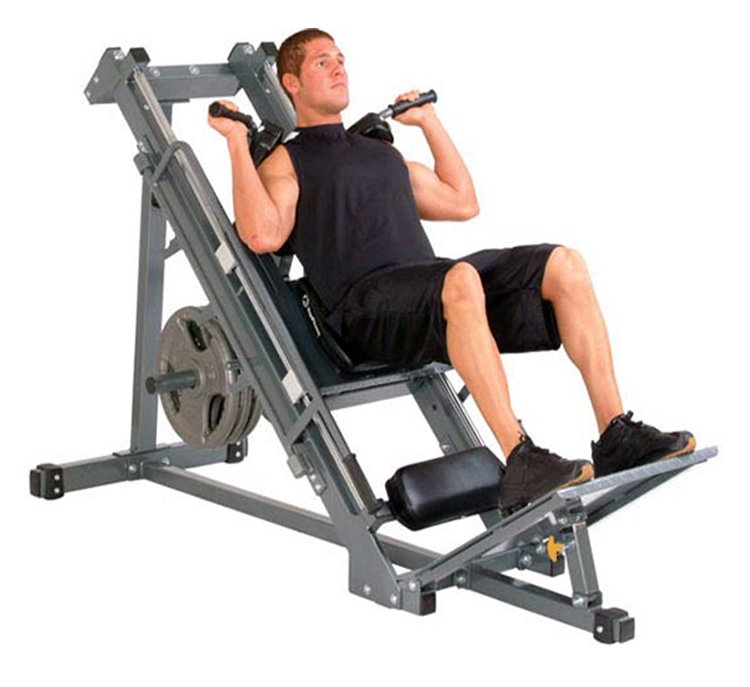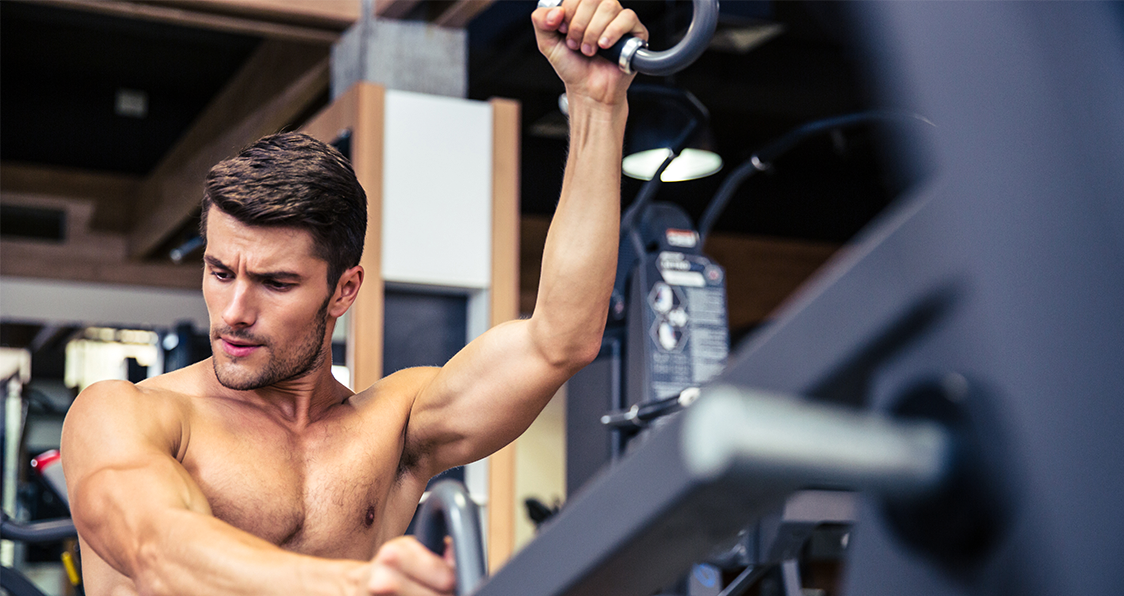Tag: Machines

11 Best Muscle Building Gym Machines
Best Gym Machines / Equipment
No two gym machines are the same in terms of the effect they have on your muscles. While some gym equipment can have a big impact in shaping your physique, a few others are just useless.
It is essential you get rid of useless machines in your workouts and stick with the ones which will give you the best bang for your buck. In this article, we will be taking you through the best machines you can use for building each muscle group. In this article, we will be using ‘machine’ and ‘equipment’ interchangeably.
Chest
Bench Press
Bench Press is the ultimate chest builder. It is also one of the first exercises you learn to perform when you join the gym. The bench press is one of the most basic gym equipment and is present in almost every gym.
Pec Deck
The inner chest and striations are the hardest to develop. The people who have a problem performing the flyes with dumbbells can find the pec deck machine helpful in maintaining the right form and range of motion.
Back
Seated Machine Row
The seated machine rows help in developing the thickness and volume in the back. Most people make the mistake of going too heavy on this exercise and load up the machine with more weight than they can handle.
Lat Pulldown
Lat Pulldowns build the width in your back. Performing the lat pulldowns with a strict form will help you get the best results. Avoid swinging, using momentum while pulling the bar to your chest as it recruits your shoulder and biceps.
Shoulders
Machine Shoulder Press
Unlike using the dumbbells, the machine shoulder press helps in maintaining constant tension on your shoulders. Machine shoulder press is a substitute for the military presses and is great with people who have shoulder problems.
Triceps
Dips Machine
The dip machine helps in the overall development of your triceps. If you don’t have access to the dips machine in your gym, you can use the parallel bars on the assisted pull-ups machine.
Biceps
Preacher Curl Machine
The preacher curl machine is a great bicep isolation exercise. Hold and squeeze your biceps for a second at the top of the movement. Doing this will fill up your biceps with blood and lactic acid.
Legs
Squat Rack
Forget leg extensions and leg curls, the squat rack is where you should be spending most of your time on a leg day. Squats are a complete leg builder and are arguably the best leg exercise.
Leg Press
The leg press can be used to target your quads and hams from different angles. Don’t let your ego get the better of you while performing this exercise and use weights with which you can maintain a full range of motion.
Multipurpose Gym Machines
Smith Machine
Smith machine is one of the most versatile gym machines. Our favorite exercises to perform on the smith machine are incline and decline bench press, standing calf raises, lunges, and squats.
Cable Crossover Machine
Cable crossover machine can be used to perform a range of exercises. It is also the gym equipment most used on the bicep and triceps day. Cables are great for maintaining constant tension on the muscle throughout the movement. Dumbbells and barbells put tension on the muscle on the concentric movement, but have no tension on the muscle on the eccentric movement.
Which is your favorite gym machine? Let us know in the comments below. Also, be sure to follow Generation Iron on Facebook and Twitter.
*Header image courtesy of Envato Elements.

The Four Best Machines To Build Big Quads
Here are four great machines to build up your quads!
Every muscle can be built with free weights or machines, but quads in particular benefit greatly from machines. You show me somebody who’s built tree trunk quads and I’ll show you somebody who takes machine training seriously.
Oddly enough though, gym culture demonizes machines. They’d rather die on the barbell hill than grind their quads through a machine. They’ll say things like, “Machines aren’t as manly” or “Machines aren’t functional.” Oh so much stupid.
Machines rock and if tired of having baby quads, strap into the following machines.
1 – Hack Squat
The hack squat is an epic machine because it’s design fits everybody’s structure. It’s angled for a reason.
With traditional barbell back squats, the bar rests on your back and you’re essentially resisting weighted gravity. This means the bar has to stay over your center of mass or else you would topple over on either side and turn into a viral gym fail.
For the weight to stay over the center of your mid foot, your joints bend at specific ratios based on your anatomy. For some people, this means they genetically get more of an upright position which means more knee flexion(knee bend) hence more quad growth.
However, some people with less favorable limb ratios could be lifting the same load for the same amount of reps may not get as much quad growth because their anatomy limits knee flexion.
Fortunately, the hack squat solves this. The machine prevents you from toppling over and puts you at angle to get lots of knee flexion. It’s also suggested you bring your stance slightly lower and more inwards if it produces more knee flexion. This isn’t always the case, but for most people, the hack squat is better quad builder than barbell back squats.
To best perform the hack squat, follow the following cues:
Push through your entire foot.
Allow your knee to travel forward.
Keep your back neutral against the pad with no posterior pelvic tilt.
Grip the handles tight for stability.
I also like to have a reverse band set up on hack squats to add more resistance to the top portion of the lift. I find this more joint friendly and allows the entire rep to be more challenging as opposed to just the bottom portion being overloaded.
2 – Leg Press
The leg press is a bodybuilding stable and for good reason, but many dorks abuse it to stroke their ego. Nearly everyone who does it slaps on too much weight and perform a micro range of motion about the size of their puny brain. You thought I was going to say something else huh?
Well anyways, the leg press is a quad stimulating fast track if you used correctly. Here’s how to maximize quad growth on the leg press.
Set up
First set the seat as far back as you can. This minimizes hip flexion and the stretch on your glutes. This also increases your range of motion and allows for more knee flexion. Less hip flexion and more knee flexion means more quads and less glutes which is what you want.
To be clear, the glutes will still be working, but they’re not the priority in this case.
Keep your back pressed against the pad and similar to the hack squat, don’t allow for any posterior pelvic tilt. This takes tension off the targeted muscles and while it’s not a super dangerous position, does place more stress on the joints.
As for feet position, your most comfortable position should be fine. Do consider going slightly narrower and lower for more quads, but only if it doesn’t sacrifice range of motion.
Warm Up
The leg press is a heavily loaded exercise, so doing at least a couple warm up sets would be wise. This also allows you find your groove and adjust your feet position if needed. Perform all warm up sets just as you would your working sets.
This means with a controlled eccentric, a forceful concentric, and a full range of motion especially in the bottom position where the muscles are stretched and procuring lots of muscle building mechanical tension.
As you add load to your warm up sets, range of motion must not be compromised. If range of motion is cut short, you’ve gone too heavy.
Working Sets
Before you start your working sets, you can add bands for accommodating resistance. If not, no worries. Rest fully before starting your first working set.
Brace every rep and push until you reach near failure. Rest at least 3 minutes between sets. If you think you can go with less rest, you didn’t push hard enough.
By set 3, you should feel like walking is challenging. It’s ok, your quads will thank you later.
And remember, the leg press is a fixed plane. There’s no cheating technique besides range of motion. Either your quads get stronger or they don’t.
3 – Smith Machine
If the leg press or hack squat is taken, you can rely on the smith machine for some sweet quad gains. Yes, the most taboo machine is a hypertrophic beast.
“But it’s a fixed bar path.”
Yes, you dork, that’s the point. That’s where all the benefits come from. Similar to a hack squat, the design of the smith machine allows you to achieve more knee flexion through a fuller range of motion.
“But it deactivates your stabilizers.”
Again, people are dense. That’s what makes the smith machine so valuable. Without your core having to stabilize, you can push your quads much harder. You’re not limited by core or stability requirements not to mention it’s less taxing on your joints and nervous system.
In other words, more muscle building stimulus for less fatigue cost. A win, win.
The smith machine also possesses the same position as the bottom of the lunge except for both legs. So it’s perfectly functional. Haters need to stop hating.
For a smith machine squat, you can stand right under the bar or have your feet slightly in forward for slightly more knee flexion. If it is an angled smith machine, make sure you face the smith machine in the direction as the bar downwards towards where you’re facing.
To execute each rep, lower your self smoothly as the bar slides down with control. Sit as upright as you can and push your knees forward. Sink into the squat as deeply as you can without any part of your back rounding or your hips tucking under.
Your quads should stretch quite nicely at the bottom reach past 90 degrees. Because of the fixed bar path and low stability demands, training close to or all the way up to failure will ensure your quads fatigued all it’s muscle fibers.
4 – Leg Extensions
The leg extension is the unicorn of machines. It’s so unique people don’t even realize it. Every machine I’ve mentioned so far is great, but they’re all similar to one on another along with free weight exercise in the muscle length it trains.
All squat or compound quad movements train the quads in the lengthened position. To maximize hypertrophy, you need to train at all muscle lengths. Leg extensions are the only exercise that trains the quads in the shortened position. In addition, it’s one of the few movement patterns that hits the front of the quads (rectus femoris) well.
The rectus femoris is tricker to train than the other quadricep muscles because it crosses both the hip and knee joint. Any squat or lunge movement doesn’t place much mechanical tension on it.
Furthermore, leg extensions are highly low fatiguing compared to compound leg movements. You can do more volume and train it within a high frequency program without worrying about recovery issues.
It also allows you to train to failure without risk of injury and use set extending techniques nicely like myo-reps or rest pause.
To set up, set the seat back as far as you can to stretch the quads the most which increases force production. Don’t set it too far back where you lose stability though.
Set the pad above ankle level. Strap on a seat belt if your leg extension has one and grip the handles tightly. Your forearms should squeeze quite hard and pull yourself into the seat. This keeps your body stable, so the quads can get smooth force output.
Kick up forcefully while maintaining stability. Pause for 1 full second with your knees locked out and lower with lots of control even as you get towards that bottom portion where the resistance drops off.
You never want to slam your leg down as your muscles won’t be producing tension in the stretched position which is crucial to growing the rectus femoris.
Learn to Train Hard With Machines
Machines provide lots of advantages from biomechanics, stability, force output, and allowing you to train your quads optimally. In fact, it’s quite hard to grow your quads quickly and naturally without machines.
These machines simply have far too many advantages to expand your thighs. So I would think twice before you yap on about machines being lame.
In fact, machines allow the targeted muscle to reach close proximities to failure. They’ll burn like all hell. Are you man enough to endure it? If so, your quads will grow.

These Machines Are Better Than Free Weights
Use These Machines Rather Than The Free Weights
Machines can be incredibly helpful for some lifters, especially beginners. The machines are a form of isolation (single-joint) exercises that train a single muscle group. While using the free weights has its advantages, there are instances where you’d be better off using the machines.
You should consider using machines instead of performing the compound lifts if you’re recovering from an injury. On days when you feel tenderness or soreness (in a funny way) in your muscles, you should head straight towards the machine station.
Pec Deck Flyes
Many people waste their precious time and energy on performing the dumbbell flyes as they can’t feel any tension on their inner pecs. Establishing a mind-muscle connection can be harder while performing exercises with free weights.
Using the pec deck fly machine can give you a better pump as the range of motion is defined and all you have to do is focus on contracting your pecs with every rep. If you don’t end the exercise with a muscle tearing pump, you should try lowering the weights.
Machine Preacher Curls
Using machines takes away many moving parts from the equation like lifting with the right form, setting an appropriate range of motion, and the scare of hurting oneself if failure is hit during the exercise.
Cutting down these variables makes more space for the most important aspect of bodybuilding – focusing on the muscle under question. The machine preacher curls are a great exercise for training the peak of your biceps.
Lat-Pulldowns
Some people have trouble training their lats optimally. A good back workout should feel as brutal as an annihilating leg workout, if not more. Performing the pulling movements work the lats and build the width in your back.
The only real substitute to the lat pulldowns is the pull-ups. Lat-pulldowns are the perfect substitute for people who can’t perform bodyweight pull-ups or think that bodyweight chin-ups are too easy.
Tricep Cable Pressdowns
In exercises like the dumbbell kickbacks, skullcrushers, or any other free weight lift there are chances of the recruitment of secondary muscles like forearms and shoulders. The cable tricep pressdowns are an isolation exercise and can efficiently target the triceps.
You can get more tension on your triceps by performing the unilateral cable tricep extensions. In the unilateral version, you perform the tricep pressdowns with one arm before switching to the other. The unilateral exercises help in building symmetry and fixing muscle imbalances.
Ab Crunch Machine
Most people make the mistake of not treating their abs like they train all their other body parts. While they do 8-12 repetitions while training other muscles, they resort to doing 25-30 reps while working abs.
Using an ab crunch machine helps by defining a range of motion and gives you the freedom to focus on contracting your abdominal. Machines are better at helping you achieve a muscle pump as they provide the same amount of tension on the muscles throughout the range of motion.
Do you prefer compound or isolation exercises? Let us know in the comments below. Also, be sure to follow Generation Iron on Facebook, Twitter, and Instagram.
*Header image courtesy of Envato Elements
